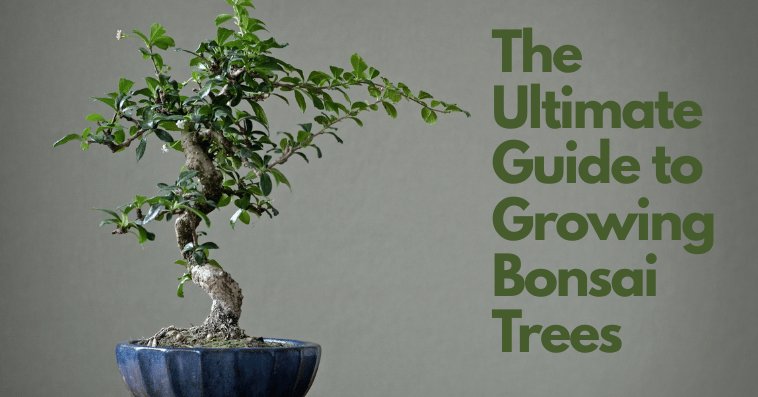Bonsai trees are more than just plants—they’re living art. Rooted in ancient Japanese and Chinese traditions, bonsai cultivation is a meditative and rewarding practice that brings nature indoors in a uniquely elegant way. Whether you’re a beginner or a seasoned gardener looking to expand your green horizon, this ultimate guide to growing bonsai trees will equip you with everything you need to start and thrive on your bonsai journey.
What is a Bonsai Tree?
A bonsai is not a specific species of tree but rather a cultivation technique that keeps a tree miniature through pruning, wiring, and container planting. Bonsai trees replicate the appearance of their full-sized counterparts, capturing the essence of nature in a small pot.
Why Grow a Bonsai Tree?
-
Aesthetic beauty for home or office
-
Stress relief through slow, mindful care
-
Improved air quality
-
A fulfilling hobby that connects you to nature
-
A great gift idea for plant lovers
Best Bonsai Tree Species for Beginners
Not all trees are equally suited for bonsai. Some species are easier to care for and more forgiving to beginners. Here are some popular, hardy options:
-
Ficus Bonsai – Tolerates low humidity and irregular watering
-
Jade Plant (Crassula ovata) – Ideal for indoor bonsai, needs minimal care
-
Chinese Elm – Easy to shape and grows fast
-
Juniper Bonsai – Great for outdoor bonsai projects
-
Schefflera (Dwarf Umbrella Tree) – Excellent for tropical indoor environments
How to Start Growing a Bonsai Tree
1. Choose Your Tree Wisely
Pick a species that suits your local climate and light availability. If you're keeping it indoors, opt for low-light varieties like Ficus or Jade.
2. Select the Right Pot
Bonsai pots are shallow to restrict root growth and maintain the tree’s miniature form. Ensure the pot has drainage holes.
3. Use Bonsai Soil Mix
Regular soil retains too much moisture. A well-draining bonsai soil mix typically includes components like akadama, pumice, and lava rock.
4. Prune for Shape and Health
There are two types of pruning in bonsai:
-
Maintenance pruning: Removes overgrowth and maintains shape
-
Structural pruning: Shapes the main trunk and branches
Use bonsai scissors or shears for precise cuts. Prune during the growing season for best results.
5. Wiring Techniques
Wiring allows you to bend and shape branches. Use aluminum or copper wire and wrap it around the branches carefully. Remove the wire after a few months to avoid cutting into the bark.
Light and Placement
-
Indoor bonsai trees need bright, indirect sunlight for at least 6 hours a day.
-
Outdoor bonsai trees prefer morning sun and afternoon shade.
-
Rotate the pot regularly to ensure even light exposure.
If natural light is insufficient, consider using LED grow lights.
Watering Your Bonsai Tree
Watering bonsai is an art in itself. Overwatering or underwatering can be fatal.
Tips:
-
Water when the topsoil feels slightly dry to the touch.
-
Use a watering can with a narrow spout to avoid soil disruption.
-
Ensure excess water drains out to prevent root rot.
-
Mist the leaves for added humidity, especially in dry climates.
Temperature and Humidity
-
Tropical species (like Ficus) do well in temperatures between 18–24°C.
-
Temperate species (like Juniper) need a period of winter dormancy and do better outdoors.
Maintain moderate humidity levels using trays with water or a room humidifier.
Fertilizing Your Bonsai
Bonsai trees require regular feeding to stay healthy in their confined pots.
-
Use a balanced liquid fertilizer (N-P-K: 10-10-10) during the growing season.
-
Reduce fertilization in winter.
-
Apply fertilizer every 2–4 weeks depending on the tree species.
Repotting Bonsai Trees
As the roots grow, they can become pot-bound. Repotting helps refresh the soil and prune the roots.
When to Repot:
-
Every 2 years for young bonsai
-
Every 3–5 years for older trees
Steps:
-
Gently remove the tree from its pot
-
Trim about one-third of the roots
-
Refill the pot with fresh bonsai soil
-
Water thoroughly
Repotting is best done in early spring, just before the growing season.
Common Bonsai Pests and Diseases
Bonsai are prone to common plant pests like aphids, spider mites, and scale insects.
Prevention and Care:
-
Regularly inspect the foliage and stems
-
Use neem oil spray or insecticidal soap
-
Avoid overwatering to prevent root fungus
Styling and Aesthetics
Bonsai trees are typically trained in one of these traditional styles:
-
Formal Upright (Chokkan)
-
Informal Upright (Moyogi)
-
Slanting (Shakan)
-
Cascade (Kengai)
-
Semi-cascade (Han-kengai)
Start with a basic style and experiment as you gain experience.
Your Bonsai Journey Starts Here
Ready to embrace the art of bonsai? Whether you're looking to add a touch of Zen to your space or dive into a fulfilling new hobby, bonsai offers both serenity and style.
Start with the right tools, the right species, and a commitment to care—and you’ll watch your tiny tree flourish into a masterpiece.
Buy Bonsai Trees and Kits from PaudheWale
Make your bonsai dream a reality with premium bonsai plants, soil, pots, and starter kits available at PaudheWale. Curated for beginners and bonsai enthusiasts alike, PaudheWale offers high-quality, healthy plants delivered right to your doorstep.
Let your bonsai journey bloom — shop now at PaudheWale and experience the magic of miniature trees.

